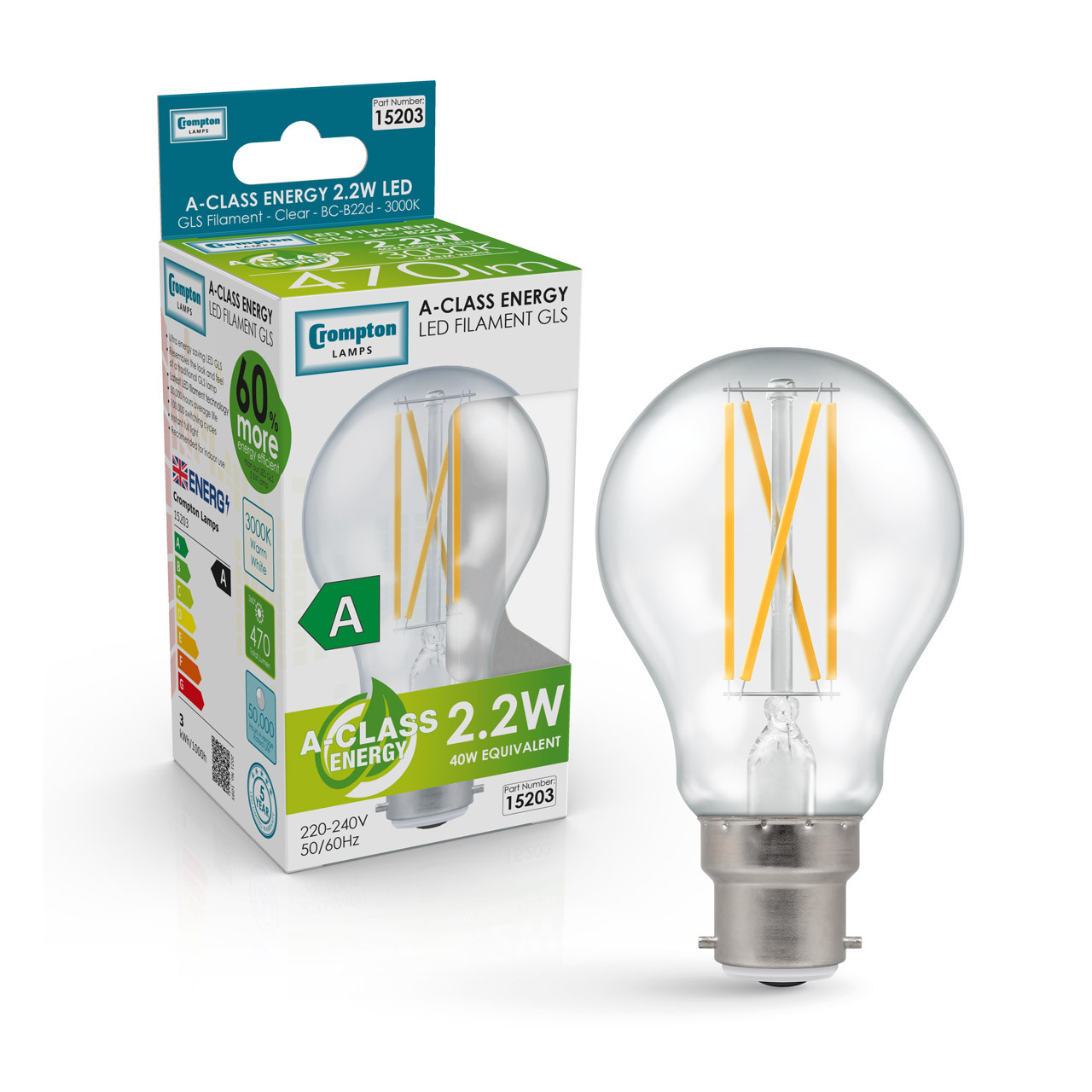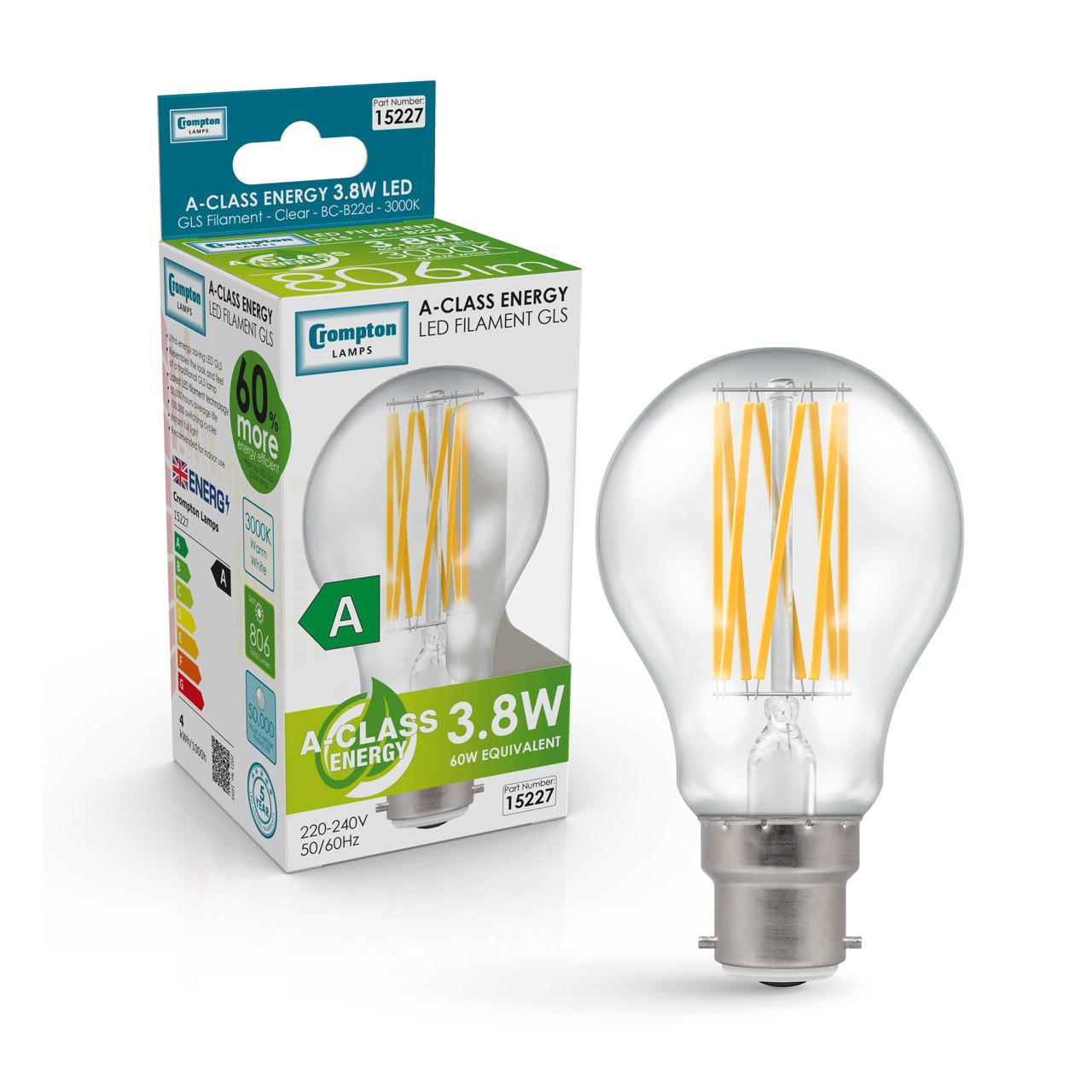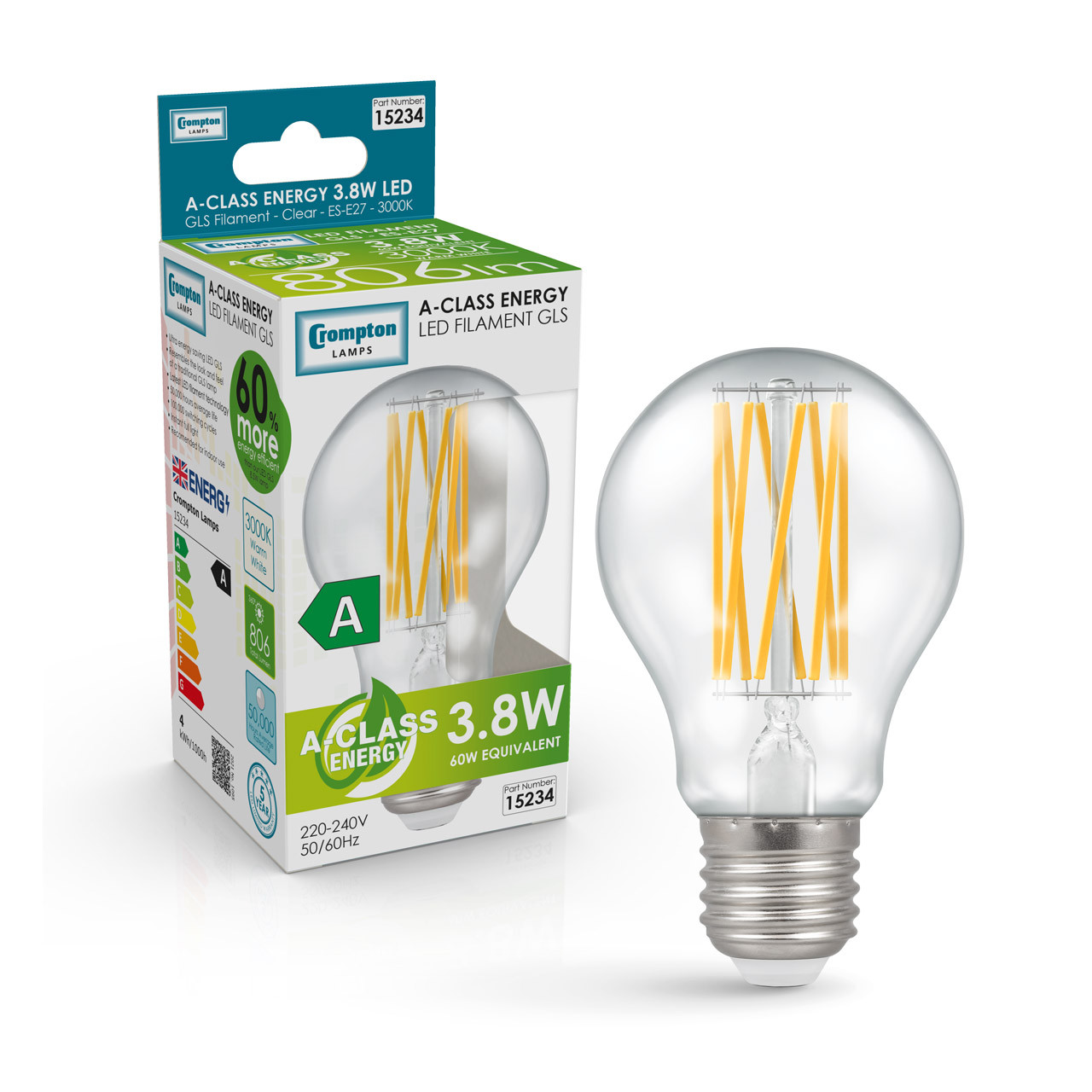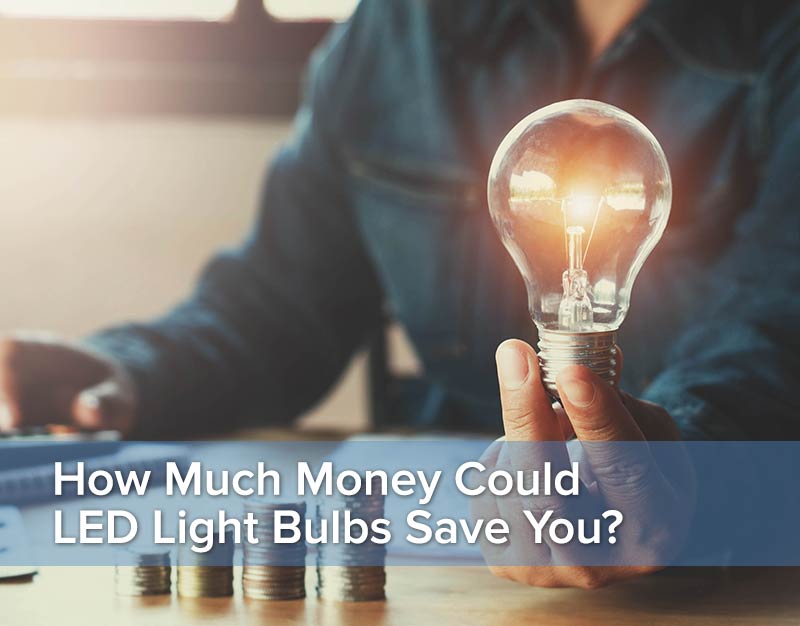
LED light bulbs have proven to be much more energy efficient than traditional incandescent light bulbs. As a result, any household could save money by upgrading to LED bulbs.
Although they are still slightly more expensive than incandescent bulbs, the upfront cost of LED light bulbs can be recouped in just a few months, thanks to the reduced energy costs they provide. We've calculated the potential savings that could be made for a home replacing all its incandescent light bulbs with energy saving LED bulbs.
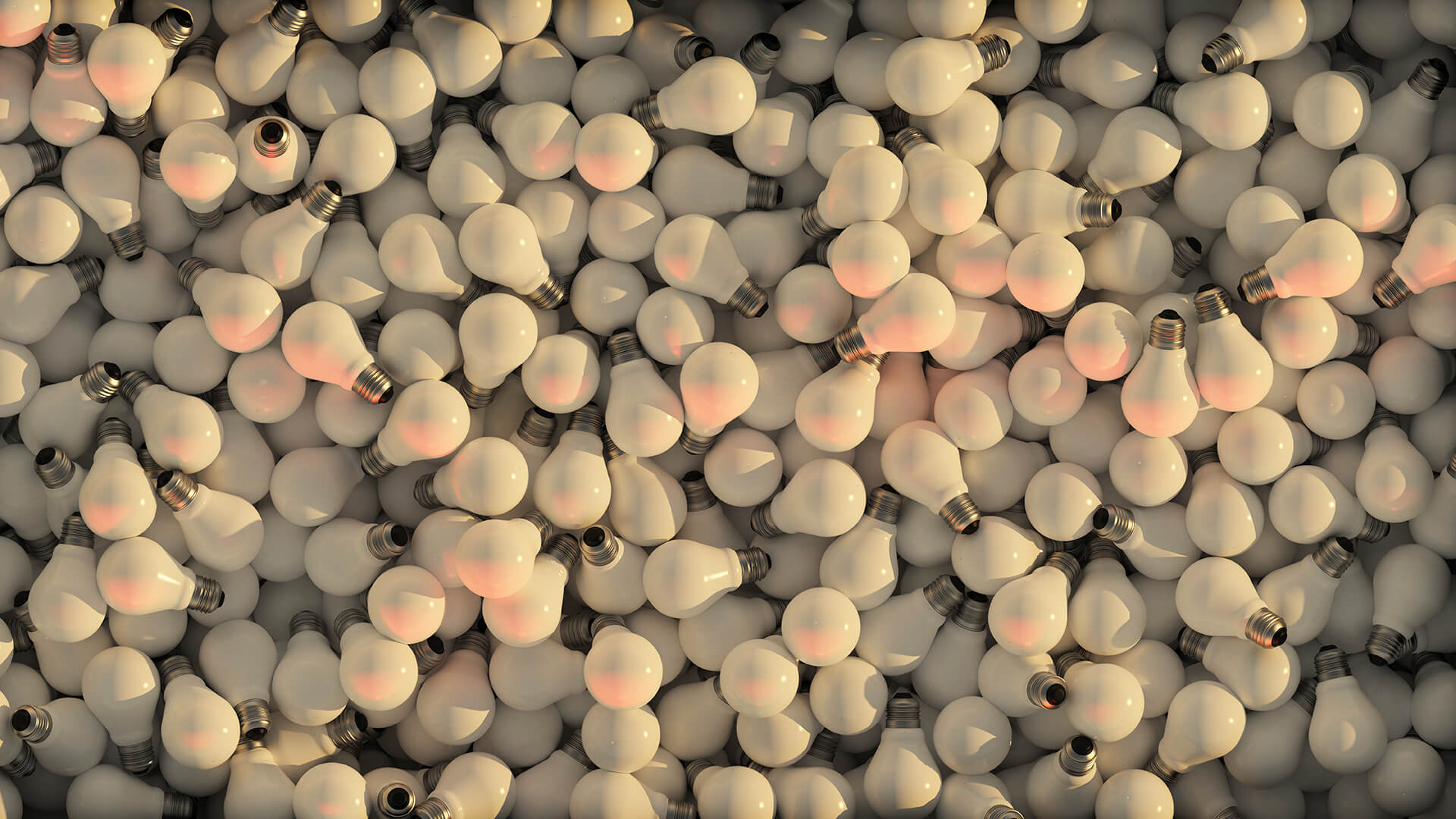
Upfront cost of the light bulbs
We will compare switching from a standard 40W GLS pearl filament bulb, which costs £1.29, with its equivalent 5W LED GLS at £5.40.
Although the upfront cost of the LED bulb is greater, it has an average rated life of 20,000 hours, while the filament bulb only lasts for 1,000 hours. So, 1 LED bulb would last as long as 20 incandescent bulbs, making the cost of each over 20,000 hours: £5.40 for the LED, and £25.80 for the filament bulbs.
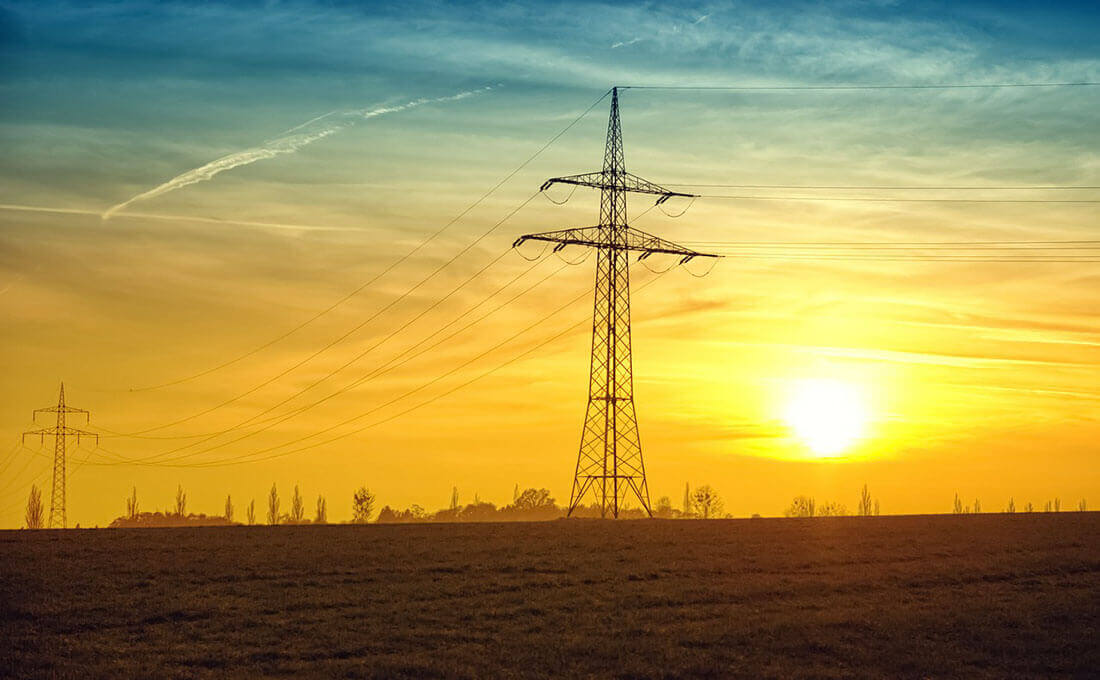
Energy costs
The biggest benefits of LED light bulbs are their energy efficiency. As our example bulbs show, an LED bulb that uses only 5 watts of power does the same job as a filament bulb that uses 40 watts. This drives real energy savings.
On an energy rate of £0.19 per kWh (kilowatt-hour - see here for more information), the LED light bulb would cost £19 over its lifetime. The incandescent bulb, however, would cost £152 over the same period.

Total Savings
In total, then, the LED light bulb would cost £5.40 upfront, plus £19 in energy costs over its 20,000 hour lifetime, for a total of £24.40. It would cost £25.80 to buy incandescent bulbs to cover the same period, and a further £152 in energy costs, totalling £177.80.
This means that you could save £153.40 by upgrading just one bulb to LED. If you had 8 bulbs to replace around the home, you would save a massive £1227.

 UK's #1 Specialist LED Retailer
UK's #1 Specialist LED Retailer
 Free Delivery Orders Over £50
Free Delivery Orders Over £50
 28 Day Returns Quality Guarantee
28 Day Returns Quality Guarantee
